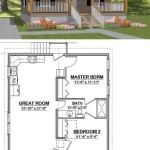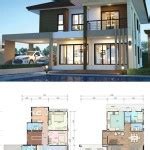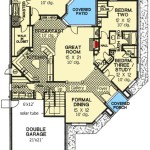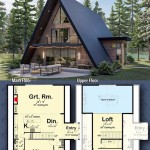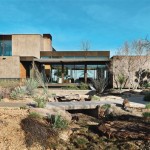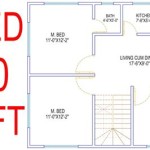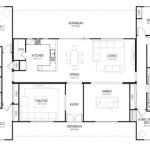Tree house plans serve as blueprints for constructing elevated structures perched among the branches of trees. These meticulously designed plans provide a comprehensive roadmap for every aspect of the tree house’s construction, ensuring its safety and functionality. One prominent example is the iconic tree house designed by renowned architect Peter Nelson, which seamlessly blends with its leafy surroundings and offers breathtaking views from its secluded perch.
Tree house plans encompass a wide array of designs, materials, and construction techniques. They often incorporate innovative solutions to address the unique challenges of building in trees, such as weight distribution, stability, and access. By presenting detailed diagrams, step-by-step instructions, and material specifications, tree house plans empower individuals with the necessary knowledge and guidance to bring their dream tree house to life.
In the following sections, we will delve deeper into the various considerations involved in tree house construction, including site selection, materials selection, and safety measures. We will also explore specific tree house plans that exemplify the ingenuity and diversity of this captivating architectural niche.
When creating tree house plans, several key considerations must be taken into account:
- Site selection
- Tree species
- Materials selection
- Structural integrity
- Access and egress
- Safety measures
- Environmental impact
- Building codes
- Aesthetics
By carefully addressing these factors, you can ensure that your tree house is both safe and enjoyable for years to come.
Site selection
Site selection is a crucial step in the tree house planning process. The chosen location will impact the tree house’s accessibility, views, privacy, and overall safety. Here are key factors to consider when selecting a site for your tree house:
- Tree health and species: Choose a healthy tree that is mature enough to support the weight of the tree house. Certain tree species are better suited for tree houses than others due to their strength and branching structure. For instance, oak, maple, and cedar trees are commonly used for tree houses.
- Tree location: Consider the location of the tree on your property. You want to choose a spot that is easily accessible but also provides privacy. Avoid trees that are too close to power lines or other hazards.
- Sunlight and shade: Think about how much sun and shade you want your tree house to have. If you prefer a sunny tree house, choose a tree that gets plenty of sunlight. If you prefer a shady tree house, choose a tree with a dense canopy.
- Views: If you want your tree house to have certain views, such as a view of a lake or forest, choose a tree that offers those views. Keep in mind that the height of the tree house will also affect the views.
Once you have considered all of these factors, you can start to narrow down your choices for a tree house site. It is also a good idea to consult with a professional arborist to get their opinion on the best tree and location for your tree house.
Tree species
The type of tree you choose for your tree house will impact its overall strength, stability, and longevity. Here are some of the most popular tree species used for tree houses, along with their key characteristics:
- Oak: Oak trees are known for their strength and durability, making them a good choice for tree houses. They have a dense wood grain that is resistant to rot and decay. Oak trees also have a strong root system that helps to anchor them in the ground.
- Maple: Maple trees are another popular choice for tree houses. They are strong and durable, but they are also more flexible than oak trees. This makes them less likely to snap or break in high winds. Maple trees also have a dense canopy that provides good shade.
- Cedar: Cedar trees are known for their resistance to rot and decay. They are also lightweight and strong, making them a good choice for tree houses. Cedar trees have a pleasant aroma that can help to repel insects.
- Pine: Pine trees are a good choice for tree houses because they are strong and durable. They also have a straight trunk that makes it easy to build a tree house platform. Pine trees are also relatively easy to find and affordable.
When choosing a tree species for your tree house, it is important to consider the following factors:
- Strength and durability: You want to choose a tree species that is strong and durable enough to support the weight of the tree house and its occupants.
- Root system: The tree’s root system should be strong enough to anchor the tree in the ground and prevent it from falling over.
- Canopy: The tree’s canopy should be dense enough to provide good shade and protection from the elements.
- Height: The tree should be tall enough to provide a good view from the tree house.
- Location: The tree should be located in a spot that is easily accessible but also provides privacy.
By considering all of these factors, you can choose the right tree species for your tree house and ensure that it is safe and enjoyable for years to come.
Materials selection
The materials you choose for your tree house will impact its overall strength, durability, and appearance. Here are some of the most common materials used for tree houses, along with their key characteristics:
- Wood: Wood is the most popular material for tree houses. It is strong, durable, and relatively easy to work with. However, wood is also susceptible to rot and decay, so it is important to choose a type of wood that is resistant to these elements. Redwood, cedar, and cypress are all good choices for tree houses.
- Metal: Metal is another popular material for tree houses. It is strong, durable, and fire-resistant. However, metal can be more expensive than wood and it can also be more difficult to work with. Steel and aluminum are two common types of metal used for tree houses.
- Plastic: Plastic is a good choice for tree houses if you are looking for a material that is lightweight and durable. Plastic is also resistant to rot and decay. However, plastic can be more expensive than wood or metal and it can also be more difficult to find.
- Composite materials: Composite materials are made from a combination of two or more materials. They are often stronger and more durable than traditional materials, and they can also be more resistant to rot and decay. Composite materials are a good choice for tree houses if you are looking for a material that is both strong and durable.
When choosing materials for your tree house, it is important to consider the following factors:
- Strength and durability: You want to choose materials that are strong and durable enough to support the weight of the tree house and its occupants. The materials should also be able to withstand the elements, such as wind, rain, and snow.
- Resistance to rot and decay: If you live in a climate that is prone to rot and decay, you will want to choose materials that are resistant to these elements. Redwood, cedar, and cypress are all good choices for tree houses in these climates.
- Cost: The cost of materials is an important consideration when building a tree house. Wood is the most affordable material, but it is also the most susceptible to rot and decay. Metal and plastic are more expensive than wood, but they are also more durable. Composite materials are the most expensive option, but they are also the strongest and most durable.
- Weight: The weight of the materials you choose will impact the overall weight of the tree house. If you are building a tree house in a tree that is not very strong, you will need to choose materials that are lightweight.
- Availability: The availability of materials is also an important consideration. You want to choose materials that are readily available in your area. Redwood, cedar, and cypress are all common materials that are available in most areas. Metal and plastic are also readily available, but they may be more expensive than wood.
By considering all of these factors, you can choose the right materials for your tree house and ensure that it is safe and enjoyable for years to come.
Structural integrity
The structural integrity of a tree house is paramount to ensure the safety of its occupants. Here are some key points to consider when designing and building a tree house to ensure its structural integrity:
- Tree selection: The tree you choose for your tree house should be healthy and strong enough to support the weight of the tree house and its occupants. The tree should also have a strong root system to anchor it in the ground and prevent it from falling over.
- Platform design: The platform of the tree house should be designed to distribute the weight of the tree house evenly across the tree’s branches. The platform should also be made from strong and durable materials that can withstand the elements.
- Connections: The connections between the platform and the tree should be strong and secure. The connections should be made using bolts, screws, or other hardware that is designed for outdoor use.
- Bracing: The tree house should be braced to prevent it from swaying or collapsing in high winds. Bracing can be added to the platform, the walls, and the roof of the tree house.
By considering all of these factors, you can design and build a tree house that is structurally sound and safe for its occupants.
Access and egress
Access and egress are important considerations for any tree house plan. You need to be able to get into and out of the tree house safely and easily. Here are some key points to consider when planning for access and egress:
- Type of access: There are several different ways to access a tree house, including ladders, stairs, and bridges. The best type of access for your tree house will depend on the height of the tree house, the terrain around the tree, and your personal preferences.
- Safety features: If you are using a ladder to access your tree house, it is important to make sure that the ladder is securely attached to the tree and that it has safety features such as non-slip rungs and a handrail.
- Location of access point: The location of the access point is also important. You want to choose a location that is easy to get to but that is also out of the way of foot traffic.
- Egress in case of emergency: In case of an emergency, you need to be able to get out of the tree house quickly and easily. Make sure that there is a clear path of egress from the tree house to the ground.
By considering all of these factors, you can plan for safe and easy access and egress to your tree house.
Safety measures
Safety should be a top priority when designing and building a tree house. Here are some key safety measures to consider:
- Choose a sturdy tree: The tree you choose for your tree house should be healthy and strong enough to support the weight of the tree house and its occupants. The tree should also have a strong root system to anchor it in the ground and prevent it from falling over.
- Use strong and durable materials: The materials you use to build your tree house should be strong and durable enough to withstand the elements and the weight of the tree house and its occupants. Pressure-treated lumber is a good choice for tree houses because it is resistant to rot and decay.
- Build a sturdy platform: The platform of your tree house should be designed to distribute the weight of the tree house evenly across the tree’s branches. The platform should also be made from strong and durable materials that can withstand the elements.
- Add railings and safety nets: Railings and safety nets can help to prevent falls from the tree house. Railings should be at least 36 inches high and should be made from a strong and durable material. Safety nets should be made from a strong and durable material that can catch falls.
By following these safety measures, you can help to ensure that your tree house is a safe and enjoyable place for everyone to use.
Environmental impact
Tree house construction can have a significant impact on the environment. It is important to consider the potential environmental impacts of your tree house project before you begin construction.
- Tree damage: Building a tree house can damage the tree, especially if the tree is not healthy or if the construction is not done properly. Damage to the tree can include root damage, trunk damage, and branch damage. Root damage can occur if the tree house is built too close to the tree’s trunk or if the tree’s roots are disturbed during construction. Trunk damage can occur if the tree house is attached to the tree’s trunk or if the tree’s bark is damaged during construction. Branch damage can occur if the tree house is built in a tree with weak or damaged branches.
- Habitat loss: Building a tree house can also result in habitat loss for wildlife. Trees provide habitat for a variety of animals, including birds, squirrels, and insects. If a tree house is built in a tree that is used by wildlife, the animals may lose their habitat. This can have a negative impact on the animals and the ecosystem as a whole.
- Visual impact: A tree house can also have a visual impact on the surrounding area. If the tree house is built in a visible location, it may detract from the natural beauty of the area. This is especially true if the tree house is large or if it is built in a tree that is not visually appealing.
- Noise and light pollution: A tree house can also generate noise and light pollution. Noise pollution can occur if the tree house is used for loud activities, such as parties or concerts. Light pollution can occur if the tree house is equipped with lights that are left on at night. Noise and light pollution can disturb the peace and quiet of the surrounding area and can also have a negative impact on wildlife.
By considering the potential environmental impacts of your tree house project before you begin construction, you can help to minimize the impact of your project on the environment.
Building codes
Building codes are regulations that govern the construction of buildings and other structures. These codes are in place to ensure the safety and structural integrity of buildings and to protect the public from hazards such as fire, collapse, and electrical shock. Building codes also address issues such as accessibility, energy efficiency, and environmental sustainability.
Tree houses are considered to be buildings under most building codes. This means that they must comply with the same safety and structural requirements as other buildings. However, there are some specific provisions in building codes that apply to tree houses. These provisions typically address issues such as:
- Tree health: Building codes may require that a tree be inspected by a qualified arborist before a tree house can be built. The arborist will assess the health of the tree and determine if it is strong enough to support the weight of the tree house.
- Tree location: Building codes may restrict the location of tree houses. For example, tree houses may not be allowed in areas that are prone to flooding or high winds.
- Tree house size: Building codes may limit the size of tree houses. This is to prevent tree houses from becoming too heavy for the tree to support.
- Tree house materials: Building codes may specify the types of materials that can be used to build tree houses. This is to ensure that the tree house is safe and durable.
- Tree house access: Building codes may require that tree houses have safe and easy access. This may include requirements for stairs, ladders, or ramps.
It is important to check with your local building department to determine the specific building codes that apply to tree houses in your area. Building codes can vary from one jurisdiction to another, so it is important to be aware of the codes that apply to your project.
Building codes are in place to protect the safety of the public. By complying with building codes, you can help to ensure that your tree house is safe and enjoyable for everyone to use.
Aesthetics
The aesthetics of your tree house are just as important as its safety and functionality. After all, you want your tree house to be a beautiful and inviting space that you and your family can enjoy for years to come.
- Shape and size: The shape and size of your tree house will impact its overall appearance. A small, square tree house will have a different look and feel than a large, round tree house. When choosing the shape and size of your tree house, consider the style of your home and the surrounding landscape.
- Color: The color of your tree house can also affect its aesthetics. You may want to choose a color that blends in with the surrounding trees or a color that stands out and makes a statement. If you are painting your tree house, be sure to use a high-quality exterior paint that will withstand the elements.
- Windows and doors: The windows and doors of your tree house can add to its charm and character. You may want to choose windows and doors that have a rustic look or a more modern look. You can also add shutters or trim to the windows and doors to give your tree house a unique look.
- Decorations: You can also use decorations to add your own personal touch to your tree house. You may want to hang wind chimes from the branches of the tree or add some colorful pillows and throws to the inside of the tree house. You can also add some plants or flowers to the tree house to make it feel more like home.
By considering all of these factors, you can create a tree house that is both beautiful and functional. Your tree house will be a place where you and your family can create lasting memories for years to come.



:max_bytes(150000):strip_icc()/GettyImages-980431586-4febe9d7191241e2953abf9f0d10eb01.jpg)





Related Posts

